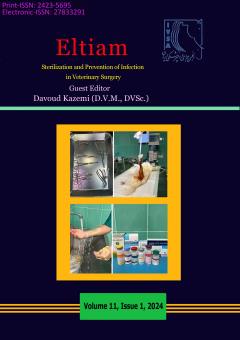Prevalence of Bovine Respiratory Disease in Dairy Calves: A Comparative Study of Clinical Signs and Thoracic Ultrasound Screening
Subject Areas : علوم تصویر برداری تشخیصی شامل رادیولوژی، سونوگرافی، سینتی گرافی، سی تی اسکن، ام آرآی و سایر شاخه های وابسته
SeyedAli Saadatnia
1
![]() ,
Gholamreza Mohamadi
2
,
Gholamreza Mohamadi
2
![]() ,
Ali Mirshahi
3
,
Ali Mirshahi
3
![]()
1 - Department of clinical sciences, faculty of veterinary medicine, ferdowsi university of Mashhad, Mashhad, Iran.
2 - Department of Clinical Science, Health and prevention of livestock diseases, Faculty of Veterinary Medicine, Ferdowsi University of Mashhad, Mashhad, Iran
3 - Department of Clinical Sciences, Faculty of Veterinary Medicine, Ferdowsi University of Mashhad, Iran
Keywords: Thoracic Ultrasonography, Dairy Calves, Early Diagnosis, Bovine Respiratory Disease (BRD),
Abstract :
Background: Bovine respiratory disease (BRD) is a leading health issue in dairy calves, significantly impacting animal welfare and farm economics.
Objectives: This study aims to evaluate the prevalence of BRD in a dairy herd, comparing the diagnostic effectiveness of clinical signs and thoracic ultrasound (TUS) screening.
Methods: A cohort of dairy herd calves was assessed using both diagnostic approaches (clinical signs and TUS). Clinical signs were evaluated based on observable indicators such as coughing, nasal discharge and abnormal breathing patterns. Concurrently, TUS was used to detect pulmonary abnormalities indicative of respiratory pathology. The prevalence rates determined by each method were analyzed.
Results: This study underscores the importance of advanced diagnostic tools in the early identification and control of BRD in calves, advocating for a more comprehensive approach to calf health management. In this cross-sectional study, we investigated the prevalence of bovine respiratory disease (BRD) in a cohort of 230 dairy calves using thoracic ultrasound (TUS) and clinical signs. Our findings indicate a significant discrepancy between the two diagnostic methods, with TUS identifying a prevalence rate of 62%, while clinical signs suggested a rate of 21%. This disparity highlights the potential for underdiagnosis when relying solely on clinical observations.
Conclusions: Our findings reveal that while clinical signs provide a rapid assessment tool for on-farm diagnosis, TUS provides higher accuracy and quality and revealing subclinical cases not readily diagnosed through clinical observation alone. The integration of TUS into routine veterinary examinations could enhance the early detection and management of BRD, potentially reducing the economic burden of the disease and improving the overall health status of dairy herds.
